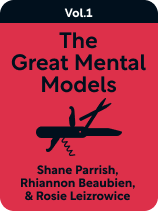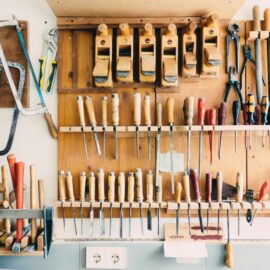

This article is an excerpt from the Shortform book guide to "The Great Mental Models Volume 1" by Shane Parrish and Rhiannon Beaubien. Shortform has the world's best summaries and analyses of books you should be reading.
Like this article? Sign up for a free trial here.
What are your circles of competence? How can you identify them? What should you do if you need to work outside of them?
Shane Parrish and Rhiannon Beaubien explain a simple model for pinpointing where your strengths and weaknesses lie. Knowing whether you’re in a circle of competence allows you to avoid blunders and make better decisions. This helps you learn, grow, and succeed more in life and work.
Keep reading to learn how to identify your circles of competence, what to do if you find yourself outside of one, and how to develop a new one.
Your Circle of Competence
Imagine a small circle around a skill you’ve mastered. That area is one of your circles of competence. Inside a circle of competence, you have a deep understanding of the territory (good maps) and the skills to navigate it. You intuitively grasp the possibilities and limitations of that skill set, and you can effectively overcome challenges and avoid common pitfalls. For instance, an experienced photographer can use her camera, direct photoshoots, and capture her subject in ways the beginner isn’t even aware of.
Outside that circle, you lack clear understanding and the skills to match. According to the authors, that’s where your weaknesses are—areas where you’re more likely to make mistakes.
| What Does Mastery Look Like? The authors explain that someone who’s mastered a domain—what they call a “lifer”—has deep, nuanced knowledge of that skill set. However, they don’t dive deep into what this looks like in practice. In Mastery, Robert Greene argues that a master develops a specific kind of mind that grows to encompass the entirety of her field of mastery. Through long-term practice (Greene suggests 20,000 hours) and intense, committed effort, a master transforms her mind: As children, we begin with minds that flow freely and explore creative ideas. As adults, we absorb societal conventions and develop practical skills, but we also risk growing rigid and conventional in our thinking. To become a master, combine the free-flowing creativity of a child’s mind with the learned discipline of an adult’s mind. Greene asserts that when you combine spontaneous, childlike intuition with rigorous adult follow-through, you can achieve feats of mastery. With time, your mind will gain a deep, thorough, intuitive sense of your field. This allows you to see what Greene calls “the Dynamic,” or the whole landscape and how it all flows. For instance, a master conductor has deep knowledge of instruments, musicianship, composition, and the landscape of music both past and present—and she sees how it all fits together as one dynamic, flowing whole. |
To judge whether you’re in a circle of competence, ask:
- Do I feel at home with the intricacies of this skill set? Can I make good decisions here?
- Or, do I feel like I’m in deep water—like I lack a clear understanding of what’s going on?
When you’re outside your circles of competence, remember that you know less than you might think. The authors recommend that you set your ego aside and use your foundational mental models to grasp the basics. Then, converse with experts to better understand that domain.
(Shortform note: Another way to quickly get up to speed with a circle is the “learn enough to be dangerous” approach. The “Learn Enough” organization teaches the minimum viable skills for web development using curated lessons that focus on the practical essentials, rather than every bit of information a beginner could need. Extrapolating the organization’s philosophy, imagine an approach to skill development that does the same for any skill—essentially, you’d apply the Pareto Principle to focus on the parts of the skill that get you the highest ROI.)
Applying this model: To develop a circle of competence, practice the corresponding skills until you become proficient. The authors recommend three key activities:
- Activity #1: Measure your performance. Using a journal or similar system, reflect on your performance in that circle, set new goals, and strive to improve through practice.
- Activity #2: Get feedback. Get candid feedback from friends and peers, and use it to improve what they point out. The authors also recommend getting a coach who can give you specific guidance to improve your skills.
- Activity #3: Stay hungry. Continually learn from your experiences and those of others by reflecting and updating your knowledge. Always keep going, getting better each day.
| The Core Skill of “Meta-Learning” While the authors don’t go deeply into learning practices, other authors have explained in depth what it takes to develop a circle of competence. Across several books—including Peak, The Art of Learning, The Talent Code, and Mastery—experts agree that deliberate, committed practice is the key to learning. Deliberate practice, sometimes called deep practice, is a form of practice wherein you learn meticulously from every mistake you make. Each time you make a mistake, you reflect on what went wrong and correct your form. In addition to this core feedback loop, you should practice with intense, undivided attention, aim for a clear goal, and continuously measure your progress. In addition, expert-level skill requires long-term commitment. In Outliers, Malcolm Gladwell claims that 10,000 hours is the magic number for expertise. However, time-to-expertise may vary—K. Anders Ericsson explained in response to Gladwell that 10,000 hours was the average practice time for professional violinists, not for any skill. He suggests that different skills require different lengths of commitment. Regardless of the specific time, practice is the way: In Mastery, George Leonard argues that mastery is about walking the path rather than reaching the goal. In other words, the journey is the point in every moment. |

———End of Preview———
Like what you just read? Read the rest of the world's best book summary and analysis of Shane Parrish and Rhiannon Beaubien's "The Great Mental Models Volume 1" at Shortform.
Here's what you'll find in our full The Great Mental Models Volume 1 summary:
- What mental models are and how they work
- How to make better decisions by using mental models
- How to use your imagination to evaluate your choices






